

|
© Carrie Heeter, Ph.D. |
|
|
Computers offer wonderful potential for "telerelating" sustaining and even enhancing close personal relationships among professionals |
Rapid growth in technologies is being driven only indirectly by human need. "Here is an important human activity, how can we facilitate it with technology?" (John Canny, Berkeley U) |
Phones were initally billed as a help in household management, and not for personal conversations.
Telephone marketers faced a need to educate people on what phones could do and how to use them.
|
"Early telephone men often fought their residential customers over social conversations, labeling such calls as frivolous and unnecessary. For example, a company announcement from 1881 complained, "The fact that subscribers have been free to use the wires as they pleased without incurring additional expense [i.e., by using flat rates] has led to the transmission of large numbers of communications of the most trivial character."






Heeter to Tellschow:
Heeter throws a plastic bug at Tellschow, landing on her shoulder.Tellschow to Heeter:
Tellschow scrambles through drawer, finds dart gun, and a dart under the desk, and during conference call, wings a dart part Heeter, which stick on the window above her computer.Heeter to Tellschow:
Heeter's eye is accidentally put out by the dart Tellschow shot, but no one can see Heeter's new eye patch because video transmission is not yet functioning. She tries to shoot back, but the dart misses ( it is hard to aim with one eye) and hits Devries instead.Devries to Heeter:
ouchTellschow to Heeter:
Carrie takes advantage of missing eye to have Borg eye implanted in it's place . Now armed with laser scope vision, Sanna finds rubber bugs hurled with deadly accuracy!Heeter to Kurtz:
Heeter walks by Kurtz and gives him a hug, on her way to look for Brian.
(i) Two-way Speech
(ii) One-way Video
(iii) Mobility
(iv) Two-way Video
(v) Ability to point at things
(vi) Ability to grasp and move things
(vii) Body language

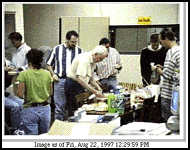
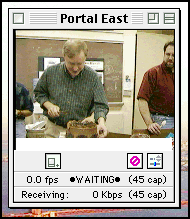

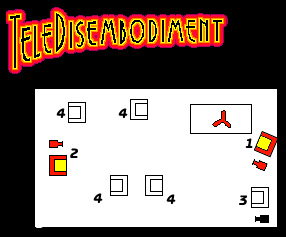
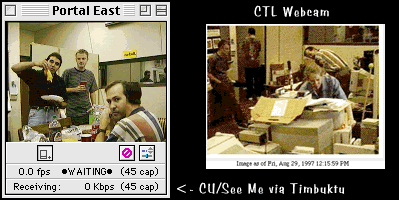
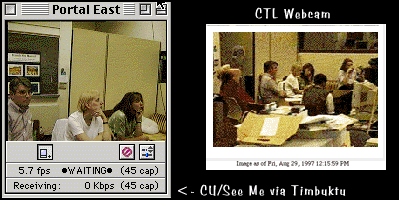

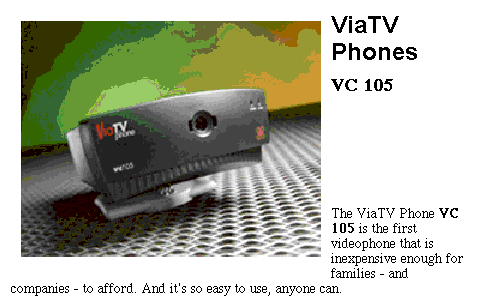
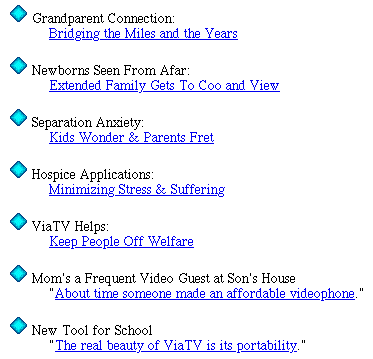


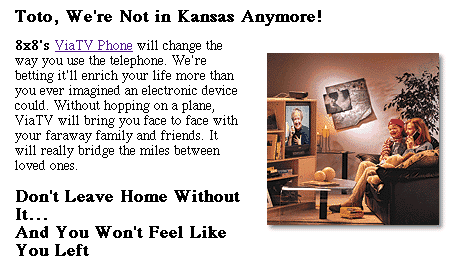
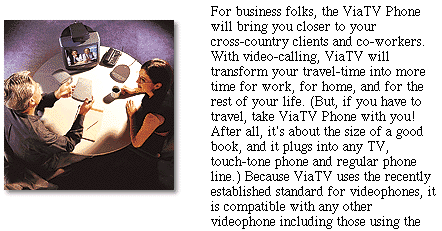
Videophone technology brings out the worst in faces. Top photo is before transmission. Bottom photo is received image. Fixing this might improve attitudes toward picturephoning...

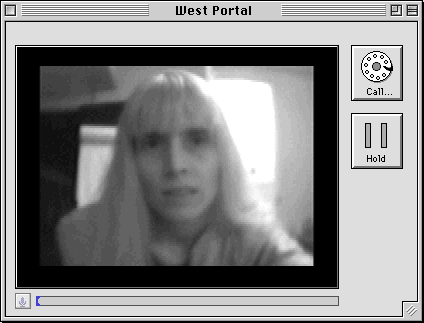
(Femininity, Fawcett Columbine: New York. 1984)
1. Body
2. Hair
3. Clothes
4. Voice
5. Skin
6. Movement
7. Emotion
8. Lack of Ambition
(You Just Don't Understand: Women and Men in Conversations, Ballantine Books, NY, 1990.)
Women Men "Rapport Talk"
"Report Talk"
Private Speaking
Public Speaking
Listening
Lecturing
Community
Contest
Conflict is Upsetting
Conflict is Involving
Intimacy (Connection)
Independence (Status, Competition)
We're close and the same
We're separate and different
Play down expertise
Exhibit expertise
Good Conversation = Personal
Good Conversation = Factual, Task-focused
|
|
|
|
Fantasy Face |
Real Face |
|
Real Name |
Fantasy Name |
|
Costume |
Costume |
|
Real Hands |
Whole Body |
The telephone is used more often by women for sustaining social relationships: kin-keeping, caring, friendship, and support.